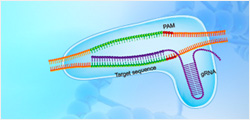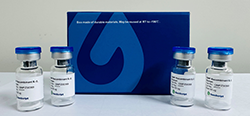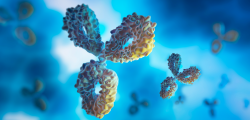Characterization and molecular mechanism dissection for lesion-mimic mutation can help to gain an in-depth insight into
regulatory mechanisms of programmed cell death in plants. In present study, the barley lesion mimic mutant bspl (barley
spotted 1eaf) was used to investigate the formation of the bspl lesion mimic phenotype in barley using proteomics and quantitative
real-time (qRT)-PCR techniques. The experiment showed that the formation of the bspl phenotype was directly related
to light. Cell necrosis spontaneously formed in multiple parts of the leaf, and H2O2 accumulated continuously along with
the formation of lesions. A total of 31 differentially expressed protein spots were identified using two-dimensi... More
Characterization and molecular mechanism dissection for lesion-mimic mutation can help to gain an in-depth insight into
regulatory mechanisms of programmed cell death in plants. In present study, the barley lesion mimic mutant bspl (barley
spotted 1eaf) was used to investigate the formation of the bspl lesion mimic phenotype in barley using proteomics and quantitative
real-time (qRT)-PCR techniques. The experiment showed that the formation of the bspl phenotype was directly related
to light. Cell necrosis spontaneously formed in multiple parts of the leaf, and H2O2 accumulated continuously along with
the formation of lesions. A total of 31 differentially expressed protein spots were identified using two-dimensional electrophoresis
and mass spectrometry analysis of the expressed proteins between the bspl and the wild-type. These differentially
expressed proteins are involved in different biological processes, mainly related to defense, photosynthesis, nitrogen acid
metabolism, and carbohydrate metabolism. The expression of 15 genes was analyzed by qRT-PCR, and the results showed
that the transcription level was basically consistent with the change in the protein level. The decreased expression of ATPase
β subunit, cytochrome B6-F complex, photosystem I reaction center subunit VI, and other proteins may lead to the blockage
of electron transport during photosynthesis, leading to cell death. Moreover, the overexpression of chitinase, thaumatin-like
protein, PR-1a and other proteins, and the increased expression of NADPH-thioredoxin reductase and dehydroascorbate
reductase may increase the disease resistance and stress resistance of bspl. This study will provide a new insight into the
molecular mechanism underlying bspl-induced cell death in plants.



































